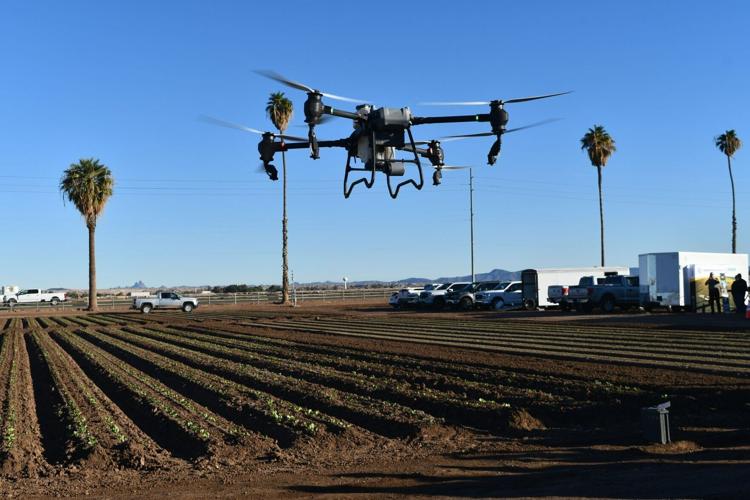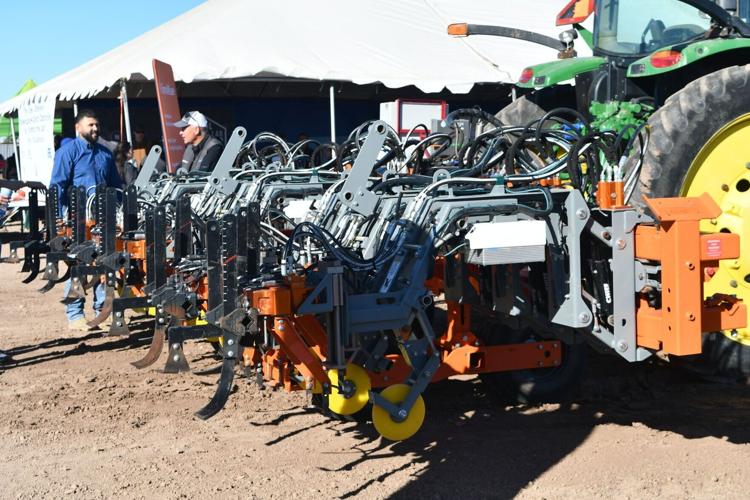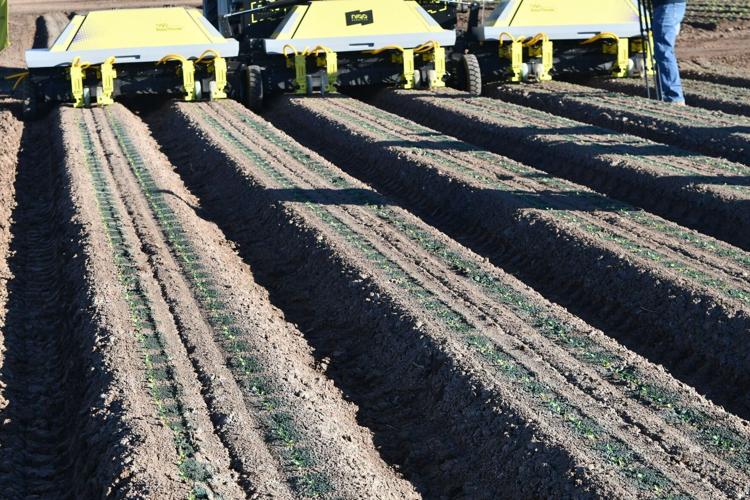Editor’s note: This story first appeared in the December-January edition of BIZ magazine, a publication of the Yuma Sun.
Agriculture-related companies and researchers are doing amazing work developing new technology to aid growers in feeding the nation and the world.
Tanya Hodges, executive director of the Yuma Center for Excellence in Desert Agriculture, observed that technology is changing agriculture. It has a rich history, going back to the industrial revolution, a period in the 17th and 18th centuries of global transition towards more widespread, efficient and stable mechanized manufacturing processes.
Today, Hodges said, the development of technology is at an accelerated pace, with artificial intelligence (AI), robots, drones and other tools advancing to address the challenges facing agriculture.
“It’s having a profound impact,” she said, by enhancing food production in Yuma and Imperial counties. “We’re leveraging technology to make agriculture more sustainable and productive with less impact on the environment.”
She continued: “Yuma needs to be and will be the test area for agriculture technology. It takes a combined effort by educators, farmers, companies and the community. This is a pivotal time for ag-tech in Yuma County.”
In the past, Yuma has hosted international visitors wanting to learn more about the research and innovation coming out of this region. Among the visitors have been representatives from several states and countries, including Nigeria, India, United Kingdom, Netherlands, Canada and Mexico.
Jason Mellow, president of Axis Ag, noted that “the desert is the most logical place to validate equipment in the field. If you can adapt it successfully here, you can apply it anywhere else. Equipment is under more stress in the desert.”
Nick Copas, sales manager for Keithly Williams Seeds, added: “We have the harshest possible environment here – the hottest, driest, dustiest. If equipment can be designed around that, it will work in Salinas.”
He described the major summer produce growing area as “luxury farming.”
“We need equipment that will get across the field,” empathized Robert Barnum, assistant grower for JV Farms in Roll. If it breaks down, it’s critical to the grower to get it back up and running quickly. That means it needs to be adaptable to individual needs and operators, easy to work on and parts are readily available locally even at 2 in the morning. As Barnum pointed out, fields here are watered by irrigation and that order of water may be on its way so the field needs to be ready, whatever it takes.
Copas recalled one such experience. His team got a call in the middle of the night from a farmer with broken down equipment. “We got it fixed at one end of the field while water was coming in the other end.”
Developing equipment is ever evolving, with changes coming rapidly and companies under pressure to get the newest and latest to market.
It’s a process with a lot of interest not only in the region and nation but also around the world. While the biggest market may be the United States, there’s a lot of development work going on in other countries where it is less expensive.
For example, Brandon Day, chief operating officer of The Yield Lab Institute, said that the company is investing in ag-tech in 16 different countries.
“We invest in startups around the world,” he said. “We encourage them to be creative. In such Latin American countries as Brazil, we have the luxury of building technology faster and more efficiently.”
That sort of effort takes time to develop relationships, though, said Louise Sutherland, project development director for Ceres Agri-Tech, who is from the United Kingdom where labor is a huge issue. “We get to know people and opportunities then open up.”
In the densely populated Netherlands, there’s no more room to expand agriculture so the emphasis is on more efficient production of food, said Ton van Arnherm, agricultural commissioner in the U.S. for the Netherlands. That country spends $2 billion a year on research and development dealing with such challenges as sustainability, the environment and climate change. “We need to maximize what we do globally … we need to share and build trust.”
New technology that can make farming easier and more efficient with less labor. For example, there’s been a lot of ongoing work on machines that can thin crops and harvest lettuce. Automation is being developed to weed fields or sense when a field or even just a section needs water or fertilizer. Or read a sticky trap for insect pests present without someone having to drive 50 miles to check it. But key to making such automation work is connectivity – technology to sense conditions in the field, analyze them and tell the machinery what to do. That relies on connectivity.
It’s been a big issue for years for Yuma-area farmers with acres of fields miles from an internet network source. A coalition of farmers has fought hard to have broadband service brought to rural areas of Yuma County. Today it is becoming a reality as fiber optic cable is being extended around the county with a million dollars going into the ground to upgrade broadband. Meanwhile, towers are being installed to relay signals where it’s not feasible to lay cable. Furthermore, a 10G system was recently installed at the Yuma Agricultural Center, enhancing its connectivity and ability to conduct workshops.
“You can’t drag fiber behind a tractor,” noted P.J. Way, broadband program manager for Yuma County. At the same time, it’s so important that farmers have the coverage to use all the tools available, such as high-tech tractors and drones.
“It’s great to have the technology, but you have to be able to access it to use,” said Hodges.
And so Yuma County is becoming a leader in smart farm technologies.
“Yuma is such an amazing place,” said Paul Brierley, director of the Arizona Department of Agriculture and previous executive director of the Yuma Center for Excellence in Desert Agriculture. “It’s critical to the local, state, national and world production of food. Farmers here are willing to use the latest technology and support companies that develop it. Yuma faces challenges head on … A lot of that is being addressed with ag-tech.”
And other countries are looking to what is happening here to help them. “We’re blessed to have the resources here,” he said.
Hodges added: “Cool things are happening here. We want to be the test center globally for agritech in the desert.”
















